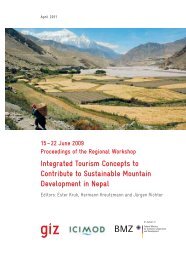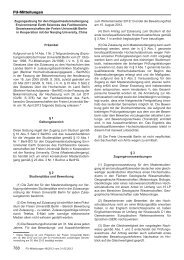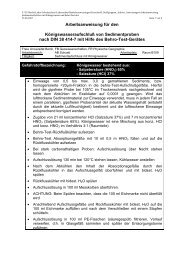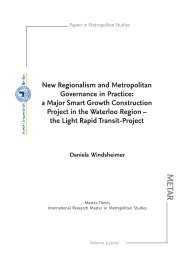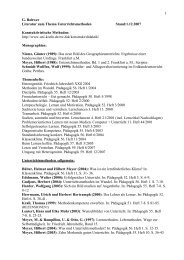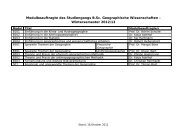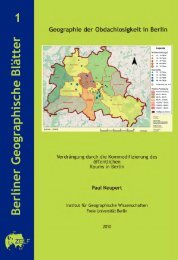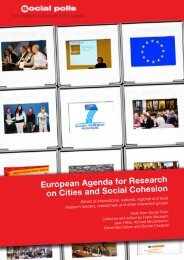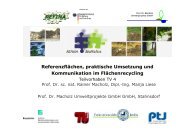After the Flood in Pakistan 38 Berlin Geographical Papers - Freie ...
After the Flood in Pakistan 38 Berlin Geographical Papers - Freie ...
After the Flood in Pakistan 38 Berlin Geographical Papers - Freie ...
Create successful ePaper yourself
Turn your PDF publications into a flip-book with our unique Google optimized e-Paper software.
3 Rapprochement of <strong>the</strong> field: research methods for assess<strong>in</strong>g flood effects <strong>in</strong><br />
rural S<strong>in</strong>dh<br />
Assess<strong>in</strong>g <strong>the</strong> livelihood situation <strong>in</strong> eight villages pre-selected by <strong>the</strong> German Red<br />
Cross/<strong>Pakistan</strong> Red Crescent Society (GRC/PRCS) presented a number of logistical and<br />
methodological challenges. A team of Master students and <strong>the</strong>ir supervisors carried out <strong>the</strong><br />
fieldwork <strong>in</strong> eight villages of three districts<br />
<strong>in</strong> S<strong>in</strong>dh-Prov<strong>in</strong>ce. The selected<br />
sites represent locations where <strong>the</strong><br />
organisations plan to implement longterm<br />
development programm<strong>in</strong>g after<br />
<strong>the</strong> relief activities were phased out<br />
over March 2011. As such, <strong>the</strong> assessment<br />
is aimed to prepare <strong>the</strong> shift<br />
from relief to development activities of<br />
<strong>the</strong> two organisations and to set <strong>the</strong><br />
ground on which appropriate project<br />
measures can be carried out that strive<br />
to improve <strong>the</strong> livelihoods of affected<br />
populations. In order to achieve this<br />
goal, <strong>the</strong> assessment team consist<strong>in</strong>g of<br />
twelve students and two supervisors<br />
was divided <strong>in</strong>to six smaller teams that<br />
were complemented by a local research<br />
assistant for translation. These<br />
teams visited each of <strong>the</strong> eight selected<br />
villages for three to five days between<br />
February 14 th and March 1 st, and<br />
carried out altoge<strong>the</strong>r 37 village focus<br />
groups, 296 questionnaire-based <strong>in</strong>dividual<br />
household <strong>in</strong>terviews and 16<br />
expert <strong>in</strong>terviews (cf. Table 3.1). The<br />
amount of data ga<strong>the</strong>red is representative of <strong>the</strong> applied three-tiered methodological<br />
approach that consisted of a village survey supported by focus groups carried out with<br />
members of respective village communities, a subsequent questionnaire-based household<br />
survey, and open <strong>in</strong>terviews with experts. This <strong>in</strong>itial step after enter<strong>in</strong>g a village was to<br />
engage <strong>in</strong> longer focus group discussion with <strong>the</strong> aim to assess <strong>the</strong> social composition,<br />
<strong>in</strong>frastructral endowments and shortcom<strong>in</strong>gs, to get an idea about economic activities and<br />
exist<strong>in</strong>g social and power relations <strong>in</strong>fluenc<strong>in</strong>g life <strong>in</strong> a village, and to ga<strong>the</strong>r accounts of<br />
<strong>the</strong> losses endured <strong>in</strong> <strong>the</strong> flood event of 2010. These discussions proved quite useful to get<br />
an overview of <strong>the</strong> situation and to get to know <strong>the</strong> target communities better. The latter<br />
was important, as field teams spent three to five days <strong>in</strong> each location, and develop<strong>in</strong>g a<br />
8




